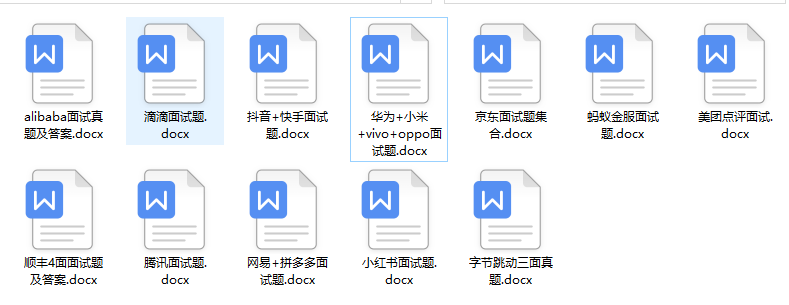简介
和其他的语言一样,Python中也有异常和错误。在 Python 中,所有异常都是 BaseException 的类的实例。 今天我们来详细看一下Python中的异常和对他们的处理方式。
Python中的内置异常类
Python中所有异常类都来自BaseException,它是所有内置异常的基类。
虽然它是所有异常类的基类,但是对于用户自定义的类来说,并不推荐直接继承BaseException,而是继承Exception。
先看下Python中异常类的结构关系:
BaseException
+-- SystemExit
+-- KeyboardInterrupt
+-- GeneratorExit
+-- Exception
+-- StopIteration
+-- StopAsyncIteration
+-- ArithmeticError
| +-- FloatingPointError
| +-- OverflowError
| +-- ZeroDivisionError
+-- AssertionError
+-- AttributeError
+-- BufferError
+-- EOFError
+-- ImportError
| +-- ModuleNotFoundError
+-- LookupError
| +-- IndexError
| +-- KeyError
+-- MemoryError
+-- NameError
| +-- UnboundLocalError
+-- OSError
| +-- BlockingIOError
| +-- ChildProcessError
| +-- ConnectionError
| | +-- BrokenPipeError
| | +-- ConnectionAbortedError
| | +-- ConnectionRefusedError
| | +-- ConnectionResetError
| +-- FileExistsError
| +-- FileNotFoundError
| +-- InterruptedError
| +-- IsADirectoryError
| +-- NotADirectoryError
| +-- PermissionError
| +-- ProcessLookupError
| +-- TimeoutError
+-- ReferenceError
+-- RuntimeError
| +-- NotImplementedError
| +-- RecursionError
+-- SyntaxError
| +-- IndentationError
| +-- TabError
+-- SystemError
+-- TypeError
+-- ValueError
| +-- UnicodeError
| +-- UnicodeDecodeError
| +-- UnicodeEncodeError
| +-- UnicodeTranslateError
+-- Warning
+-- DeprecationWarning
+-- PendingDeprecationWarning
+-- RuntimeWarning
+-- SyntaxWarning
+-- UserWarning
+-- FutureWarning
+-- ImportWarning
+-- UnicodeWarning
+-- BytesWarning
+-- ResourceWarning
其中BaseException,Exception,ArithmeticError,BufferError,LookupError 主要被作为其他异常的基类。
语法错误
在Python中,对于异常和错误通常可以分为两类,第一类是语法错误,又称解析错误。也就是代码还没有开始运行,就发生的错误。
其产生的原因就是编写的代码不符合Python的语言规范:
> while True print('Hello world')
File "<stdin>", line 1
while True print('Hello world')
^
SyntaxError: invalid syntax
上面代码原因是 print 前面少了 冒号。
异常
即使我们的程序符合python的语法规范,但是在执行的时候,仍然可能发送错误,这种在运行时发送的错误,叫做异常。
看一下下面的异常:
>>>10 * (1/0)
Traceback (most recent call last):
File "<stdin>", line 1, in <module>
ZeroDivisionError: division by zero
>>> 4 + spam*3
Traceback (most recent call last):
File "<stdin>", line 1, in <module>
NameError: name 'spam' is not defined
>>> '2' + 2
Traceback (most recent call last):
File "<stdin>", line 1, in <module>
TypeError: Can't convert 'int' object to str implicitly
异常处理
程序发生了异常之后该怎么处理呢?
我们可以使用try except 语句来捕获特定的异常。
>>> while True:
... try:
... x = int(input("Please enter a number: "))
... break
... except ValueError:
... print("Oops! That was no valid number. Try again...")
...
上面代码的执行流程是,首先执行try中的子语句,如果没有异常发生,那么就会跳过except,并完成try语句的执行。
如果try中的子语句中发生了异常,那么将会跳过try子句中的后面部分,进行except的异常匹配。如果匹配成功的话,就会去执行except中的子语句。
如果发生的异常和 except 子句中指定的异常不匹配,则将其传递到外部的 try语句中。
一个try中可以有多个except 子句,我们可以这样写:
try:
raise cls()
except D:
print("D")
except C:
print("C")
except B:
print("B")
一个except也可以带多个异常:
... except (RuntimeError, TypeError, NameError):
... pass
except 子句还可以省略异常名,用来匹配所有的异常:
import sys
try:
f = open('myfile.txt')
s = f.readline()
i = int(s.strip())
except OSError as err:
print("OS error: {0}".format(err))
except ValueError:
print("Could not convert data to an integer.")
except:
print("Unexpected error:", sys.exc_info()[0])
raise
try … except语句有一个可选的 else 子句,在使用时必须放在所有的 except 子句后面。对于在 try 子句不引发异常时必须执行的代码来说很有用。 例如:
for arg in sys.argv[1:]:
try:
f = open(arg, 'r')
except OSError:
print('cannot open', arg)
else:
print(arg, 'has', len(f.readlines()), 'lines')
f.close()
except可以指定异常变量的名字 instance ,这个变量代表这个异常实例。
我们可以通过instance.args来输出异常的参数。
同时,因为异常实例定义了 str(),所以可以直接使用print来输出异常的参数。而不需要使用 .args。
我们看一个例子:
>>> try:
... raise Exception('spam', 'eggs')
... except Exception as inst:
... print(type(inst)) # the exception instance
... print(inst.args) # arguments stored in .args
... print(inst) # __str__ allows args to be printed directly,
... # but may be overridden in exception subclasses
... x, y = inst.args # unpack args
... print('x =', x)
... print('y =', y)
...
<class 'Exception'>
('spam', 'eggs')
('spam', 'eggs')
x = spam
y = eggs
上面的例子中,我们在try字句中抛出了一个异常,并且指定了2个参数。
抛出异常
我们可以使用raise语句来抛出异常。
>>> raise NameError('HiThere')
Traceback (most recent call last):
File "<stdin>", line 1, in <module>
NameError: HiThere
raise的参数是一个异常,这个异常可以是异常实例或者是一个异常类。
注意,这个异常类必须是Exception的子类。
如果传递的是一个异常类,那么将会调用无参构造函数来隐式实例化:
raise ValueError # shorthand for 'raise ValueError()'
如果我们捕获了某些异常,但是又不想去处理,那么可以在except语句中使用raise,重新抛出异常。
>>> try:
... raise NameError('HiThere')
... except NameError:
... print('An exception flew by!')
... raise
...
An exception flew by!
Traceback (most recent call last):
File "<stdin>", line 2, in <module>
NameError: HiThere
异常链
如果我们通过except捕获一个异常A之后,可以通过raise语句再次抛出一个不同的异常类型B。
那么我们看到的这个异常信息就是B的信息。但是我们并不知道这个异常B是从哪里来的,这时候,我们就可以用到异常链。
异常链就是抛出异常的时候,使用raise from语句
>>> def func():
... raise IOError
...
>>> try:
... func()
... except IOError as exc:
... raise RuntimeError('Failed to open database') from exc
...
Traceback (most recent call last):
File "<stdin>", line 2, in <module>
File "<stdin>", line 2, in func
OSError
The above exception was the direct cause of the following exception:
Traceback (most recent call last):
File "<stdin>", line 4, in <module>
RuntimeError: Failed to open database
上面的例子中,我们在捕获IOError之后,又抛出了RuntimeError,通过使用异常链,我们很清晰的看出这两个异常之间的关系。
默认情况下,如果异常是从except 或者 finally 中抛出的话,会自动带上异常链信息。
如果你不想带上异常链,那么可以 from None 。
try:
open('database.sqlite')
except IOError:
raise RuntimeError from None
Traceback (most recent call last):
File "<stdin>", line 4, in <module>
RuntimeError
自定义异常
用户可以继承 Exception 来实现自定义的异常,我们看一些自定义异常的例子:
class Error(Exception):
"""Base class for exceptions in this module."""
pass
class InputError(Error):
"""Exception raised for errors in the input.
Attributes:
expression -- input expression in which the error occurred
message -- explanation of the error
"""
def __init__(self, expression, message):
self.expression = expression
self.message = message
class TransitionError(Error):
"""Raised when an operation attempts a state transition that's not
allowed.
Attributes:
previous -- state at beginning of transition
next -- attempted new state
message -- explanation of why the specific transition is not allowed
"""
def __init__(self, previous, next, message):
self.previous = previous
self.next = next
self.message = message
finally
try语句可以跟着一个finally语句来实现一些收尾操作。
>>> try:
... raise KeyboardInterrupt
... finally:
... print('Goodbye, world!')
...
Goodbye, world!
KeyboardInterrupt
Traceback (most recent call last):
File "<stdin>", line 2, in <module>
finally 子句将作为 try 语句结束前的最后一项任务被执行, 无论try中是否产生异常,finally语句中的代码都会被执行。
如果 finally 子句中包含一个 return 语句,则返回值将来自 finally 子句的某个 return 语句的返回值,而非来自 try 子句的 return 语句的返回值。
>>> def bool_return():
... try:
... return True
... finally:
... return False
...
>>> bool_return()
False
Python 的迅速崛起对整个行业来说都是极其有利的 ,但“人红是非多”,导致它平添了许许多多的批评,不过依旧挡不住它火爆的发展势头。
如果你对Python感兴趣,想要学习python,这里给大家分享一份Python全套学习资料,都是我自己学习时整理的,希望可以帮到你,一起加油!
😝有需要的小伙伴,可以点击下方链接免费领取或者V扫描下方二维码免费领取🆓
点击这里

1️⃣零基础入门
① 学习路线
对于从来没有接触过Python的同学,我们帮你准备了详细的学习成长路线图。可以说是最科学最系统的学习路线,你可以按照上面的知识点去找对应的学习资源,保证自己学得较为全面。

② 路线对应学习视频
还有很多适合0基础入门的学习视频,有了这些视频,轻轻松松上手Python~

③练习题
每节视频课后,都有对应的练习题哦,可以检验学习成果哈哈!

2️⃣国内外Python书籍、文档
① 文档和书籍资料

3️⃣Python工具包+项目源码合集
①Python工具包
学习Python常用的开发软件都在这里了!每个都有详细的安装教程,保证你可以安装成功哦!

②Python实战案例
光学理论是没用的,要学会跟着一起敲代码,动手实操,才能将自己的所学运用到实际当中去,这时候可以搞点实战案例来学习。100+实战案例源码等你来拿!

③Python小游戏源码
如果觉得上面的实战案例有点枯燥,可以试试自己用Python编写小游戏,让你的学习过程中增添一点趣味!

4️⃣Python面试题
我们学会了Python之后,有了技能就可以出去找工作啦!下面这些面试题是都来自阿里、腾讯、字节等一线互联网大厂,并且有阿里大佬给出了权威的解答,刷完这一套面试资料相信大家都能找到满意的工作。


5️⃣Python兼职渠道
而且学会Python以后,还可以在各大兼职平台接单赚钱,各种兼职渠道+兼职注意事项+如何和客户沟通,我都整理成文档了。

上述所有资料 ⚡️ ,朋友们如果有需要的,可以扫描下方👇👇👇二维码免费领取🆓






















 568
568











 被折叠的 条评论
为什么被折叠?
被折叠的 条评论
为什么被折叠?








